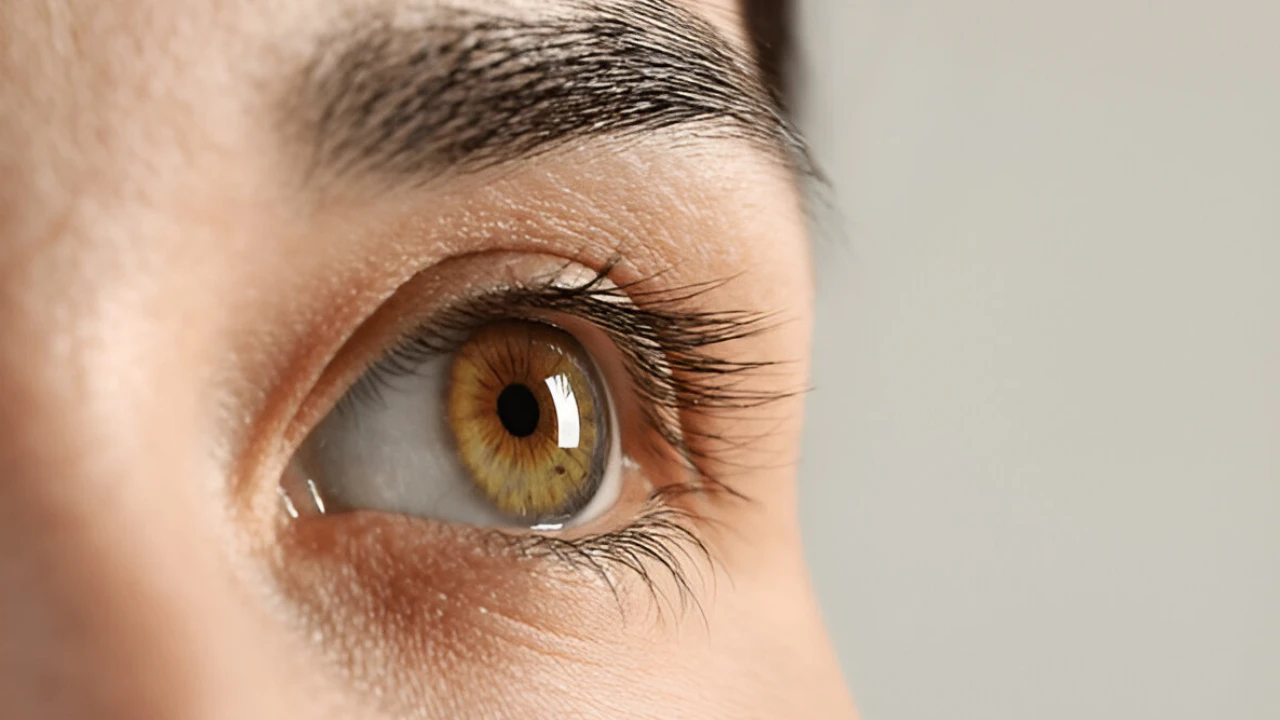Have you ever puzzled how commonplace your eye shade is in comparison to others around the world? Maybe you’ve got deep brown eyes that seem to be anywhere, or perhaps you’re rocking a rare colour like green—or even hazel, that is what were given me began on this journey. My friend Leilani has those lovely hazel eyes that shift among inexperienced, gold, and brown depending at the mild, and she or he’s constantly been curious approximately how specific they are. I’ll admit, her curiosity rubbed off on me, and I couldn’t resist digging into the stats and technological know-how at the back of eye shades. So, clutch a comfortable seat, and allow’s chat about eye coloration probabilities across the globe—hazel eyes included!
What Determines Eye Color?
Before we jump into the numbers, allow’s communicate about what gives your eyes their shade in the first area. It all comes right down to a little pigment referred to as melanin. You’ve probable heard of melanin—it’s the equal stuff that determines your skin tone and hair colour. In your eyes, it’s located in the iris, that colorful ring around your scholar. The extra melanin you’ve were given in there, the darker your eyes might be. So, brown eyes mean a variety of melanin, whilst lighter shades like blue or inexperienced suggest there’s less of it striking around.
But right here’s where it receives exciting: it’s no longer just about how a great deal melanin you’ve got—it’s also approximately the way it’s spread out and how light bounces off it. For example, blue eyes don’t honestly have blue pigment; they look blue because of the manner mild scatters within the iris. Hazel eyes, then again, are a beautiful mix of colors because of a moderate quantity of melanin blended with that mild-scattering magic.
Now, permit’s sprinkle in some genetics. You might’ve heard that eye colour comes out of your mother and father, and that’s authentic—but it’s not as simple as “brown eyes plus blue eyes equals some thing in between.” Scientists used to think one gene controlled it all, but now we know it’s more like 16 genes working together in a complex dance. That’s why you can get surprises—like two brown-eyed dad and mom having a child with hazel eyes. Pretty cool, proper?
Most Common Eye Colors and Their Percentages
Alright, allow’s get to the good stuff: the numbers! What percentage of the arena has each eye colour? I’ve rounded up the stats for the large four—brown, blue, green, and hazel—so we will see how they stack up globally. Spoiler alert: hazel eyes are unique, and we’ll give them some greater love considering that that’s what sparked this whole journey.
Brown Eyes
Brown eyes take the crown as the most commonplace eye coloration international. Depending on who you ask, among 70% and 80% of humans have brown eyes. That’s a huge bite of the populace! You’ll see them everywhere, however they’re mainly dominant in places like Africa, Asia, and South America. Here’s a fun tidbit: some researchers trust that way returned—think 10,000 years ago—anyone had brown eyes. Then, a genetic mutation popped up and began mixing matters up. So, if you’ve got brown eyes, you’re in tremendous employer!
Blue Eyes
Next up, blue eyes. These beauties make up approximately 8% to 10% of the sector’s population. They’re now not as not unusual as brown, but they’re a large deal in Europe—particularly up north in locations like Sweden or Finland, where up to 89% of parents might have blue eyes. Here’s some thing wild: every blue-eyed character these days stocks a single ancestor from thousands of years ago whilst that mutation first appeared. It’s like a secret membership with a in reality old membership card!
Green Eyes
Green eyes are the rarest of the main eye colorings, clocking in at simply 2% of the worldwide populace. They’re like little emeralds, and also you’re maximum likely to spot them in Northern and Central Europe—assume Ireland or Germany. If you’ve were given inexperienced eyes, you’re a part of an distinct group. They’re so unusual that they often flip heads, and I can see why!
Hazel Eyes
And now, the big name of our show: hazel eyes. Globally, approximately 5% of human beings have hazel eyes, putting them in a candy spot—now not as commonplace as brown or blue, however no longer as uncommon as green. What makes hazel eyes so unique? They’re a excellent combination of green, gold, and brown, and they can shift depending on the mild or maybe what you’re wearing. My pal Leilani’s hazel eyes do this all the time—one minute they’re greenish, the subsequent they’ve got a golden glow. It’s like nature couldn’t determine on just one colour and gave us a bit bit of the whole thing.
Hazel eyes pop up greater in sure places, like North Africa, the Middle East, Brazil, and Spain. The blend of genetic backgrounds in these regions makes hazel a chunk greater not unusual there than some other place. Want to peer a few beautiful examples or dig deeper into the genetics? This useful resource has you blanketed.
What Percentage of the World Has Hazel Eyes?
Let’s zoom in on that variety again: about 5% of people global have hazel eyes. That’s based totally on research searching at eye shade distribution across populations. It’s no longer a large percentage, but it’s enough which you’ve in all likelihood met someone with hazel eyes—or perhaps you’re one of the lucky ones your self!
Where Are Hazel Eyes Most Common?
Hazel eyes shine brightest in places like North Africa, the Middle East, Brazil, and Spain. Why? It’s all approximately the gene pool. These areas have a wealthy mix of ancestry, which enhances the chances of that ideal hazel blend showing up. So, in case you’re ever wandering through Morocco or São Paulo, maintain an eye out—you might spot extra hazel-eyed oldsters than you’d expect.
What Do Hazel Eyes Look Like?
Hazel eyes are difficult to pin down due to the fact they’re so flexible. Picture a combination of inexperienced, gold, and brown, regularly with a burst of shade radiating from the scholar. They can look completely extraordinary depending at the light—like a mood ring to your face! One day they might lean extra inexperienced, the subsequent they’re warm and brown. It’s that chameleon-like quality that makes hazel eyes stand out.
Benefits and Risks of Having Hazel Eyes
Okay, so what’s it want to stay with hazel eyes? The moderate melanin in them offers a piece greater protection against UV rays than first-rate-mild eyes like blue or inexperienced, however no longer as a great deal as darkish brown eyes. That means hazel-eyed oldsters might be a tad more sensitive to vibrant daylight than their brown-eyed buddies—sunglasses are your friend right here! Health-sensible, there’s no stable proof that hazel eyes include unique dangers or perks past what’s standard for eye colorings, however keeping up with eye assessments is wise regardless of what color you’ve were given.
Regional Variations in Eye Color
Eye color isn’t the identical everywhere—it adjustments relying on in which you’re inside the world. Let’s take a brief journey around the globe to look how it shakes out.
Europe is the land of range. Up north in Scandinavia, blue eyes rule—once in a while as excessive as ninety nine% of the populace! Head south or west, and you’ll see more inexperienced and hazel eyes mixing in, mainly in locations like Ireland or Spain.
In Africa, brown eyes are king. Lighter colorations like hazel or blue are exquisite uncommon here, even though you would possibly catch a glimpse of hazel in North Africa where genetic range spices things up.
Asia maintains it quite uniform—almost all of us has brown eyes. The genes for lighter shades just aren’t as commonplace, so spotting hazel eyes right here is like finding a needle in a haystack.
The Americas are a large melting pot. Brown eyes nevertheless lead, however way to immigration from Europe and somewhere else, you’ll discover blue, inexperienced, and hazel eyes too—specifically inside the U.S. Or Canada.
Want a country-by way of-u . S . A . Breakdown? This guide has all of the information.
Interesting Facts About Eye Color
Let’s spice things up with some amusing statistics about eye color—due to the fact who doesn’t love an amazing communique starter?
Can Eye Color Change?
Yep, it totally can! Babies often start with blue or grey eyes that shift as they grow—commonly locking in their genuine coloration with the aid of age three. That’s due to the fact melanin builds up over the years. For adults, eye colour can trade too, however it’s rarer—every now and then due to situations like glaucoma or even an harm. Hazel eyes, with their blend of colours, can seem to shift extra regularly simply due to lighting hints.
Eye Color and Health
Your eye colour may say extra approximately you than you observed. Studies advocate lighter eyes—like blue, green, or even hazel—may want to imply a better chance for things like macular degeneration down the road. Brown eyes, with all that melanin, may offer extra protection. Hazel eyes sit inside the middle, in order that they’ve got a balanced vibe going on. Oh, and right here’s a unusual one: lighter-eyed parents might see higher inside the darkish however squint more in vivid sun. No count number your coloration, although, normal eye check-united states of americaare a need to.
Weird and Wonderful Variations
Ever heard of heterochromia? It’s while someone has distinctive coloured eyes—like one blue and one hazel. It’s rare, but it occurs! Then there’s imperative heterochromia, in which the inner ring of the iris is a unique color than the outer component—hazel eyes regularly rock this appearance certainly. These little quirks remind us how wild and particular eye color can be.
Conclusion
So, what have we discovered on our eye coloration journey? Brown eyes dominate with 70-80% of the arena’s populace, blue eyes comply with at 8-10%, green eyes are a rare 2%, and hazel eyes—like Leilani’s—keep steady at approximately 5%. Hazel eyes are greater unique with their green-gold-brown mix, stoning up more in locations like North Africa, the Middle East, Brazil, and Spain. They’re now not the maximum commonplace, however they’re far from everyday.
From melanin and genetics to nearby vibes and fun information, eye shade is a window into who we are—and the way various we all are. Whether you’ve were given hazel eyes that dance within the mild or another coloration that tells its very own tale, it’s really worth celebrating. And hi there, let’s maintain those eyes healthful—grab a few sunglasses, e-book that eye exam, and revel in the view.


















Leave a Reply
You must be logged in to post a comment.